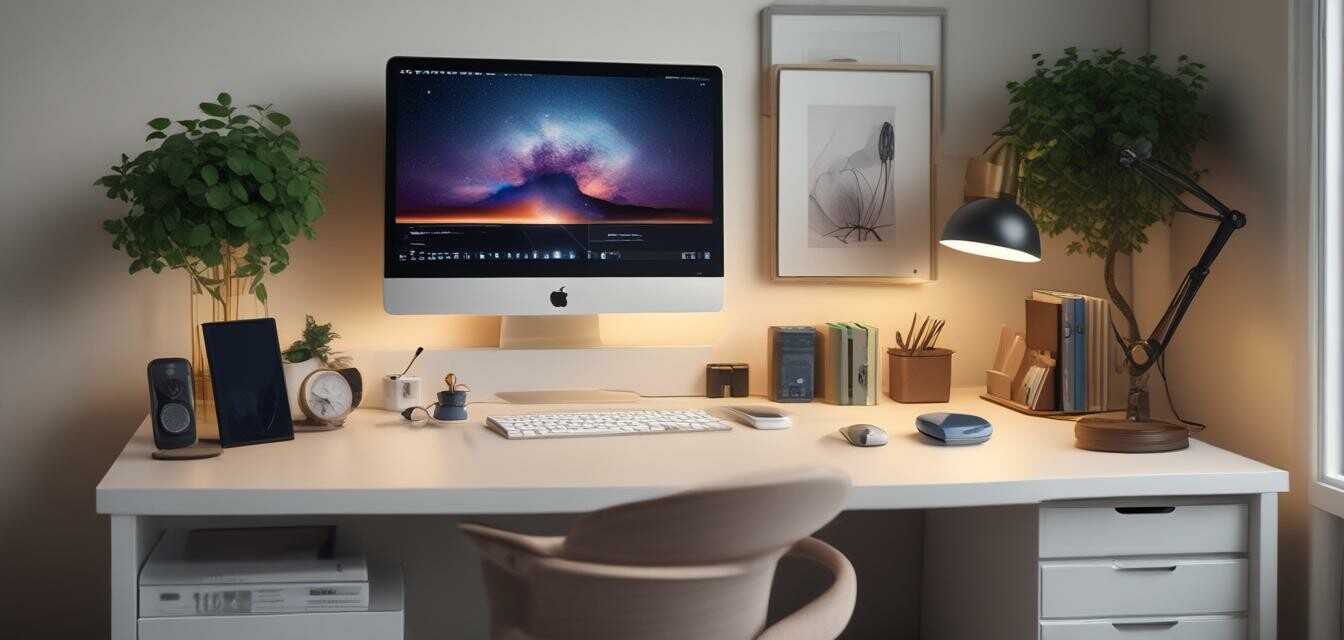
Trends in Smart Home Devices for Your Home Office
Key Takeaways
- Integration of smart home devices boosts productivity in home offices.
- Smart lighting systems adapt to user preferences, creating an optimal workspace.
- Voice-activated assistants streamline daily tasks and improve workflow.
- Home office setups with smart devices promote ergonomics and comfort.
- The trend of automation is shaping how we work from home in 2025.
As we step into 2025, the integration of smart home devices into home office setups is redefining how we work. From voice-activated assistants to smart lighting systems, these advancements are proving to be more than just conveniences; they are transforming productivity and work-life balance in unprecedented ways.
The rise of smart home devices in workspaces
With the increasing shift toward remote work, many professionals are looking for ways to enhance their home office setups. Smart home devices not only cater to these needs but also provide innovative solutions that enhance productivity. Whether it’s through improved connectivity or automation, the trend is clear—smart home devices are becoming an integral part of the modern work environment.
Impact on productivity
One of the most significant benefits of incorporating smart devices into home offices is the boost in productivity that many users report. Here’s a look at some trends helping achieve this:
| Device Type | Functionality | Productivity Boost |
|---|---|---|
| Smart Speakers | Voice command controls | Streamlines communication and task management |
| Smart Lighting | Adaptive brightness settings | Reduces eye strain during long hours |
| Smart Plugs | Remote control for devices | Saves time by automating device management |
| Smart Thermostats | Climate control | Enhances comfort, reducing distractions |
| Smart Monitors | Integrated technology | Improves multitasking efficiency |
Popular smart home devices transforming the home office
To further understand these shifts, let’s explore some of the most popular smart devices trending in 2025:
- Voice-Activated Assistants: These AI-driven devices manage schedules, send reminders, and even control other smart devices in your workspace.
- Smart Lighting Systems: Allows users to set the mood for their workspace with programmable lighting that can adjust to time of day.
- Ergonomic Furniture: Several companies are merging smart technology with ergonomic designs, leading to office furniture that adjusts automatically based on user preferences.
- Smart Security Systems: Ensure that your home office is secure with smart locks and surveillance, providing peace of mind while you work remotely.
Pros
- Enhanced automation increases efficiency.
- Improved ergonomics and comfort lead to better productivity.
- Smart devices offer solutions for timely task management.
- Ability to personalize the work environment increases job satisfaction.
Cons
- High initial investment for smart devices.
- Dependency on technology can lead to frustration when systems fail.
- Potential security risks with multiple connected devices.
How automation influences work flexibility
Automation has led to a shift in how we perceive work-life balance. Smart home devices can automate mundane tasks, leaving more time for employees to focus on what matters. Here are some pivotal areas where automation has made a difference:
| Task | Traditional Method | Automated Smart Method |
|---|---|---|
| Temperature adjustment | Manual thermostats | Smart thermostats adjust automatically |
| Lighting control | Light switches | Smart light with voice control |
| Device management | Manual plug usage | Smart plugs with scheduling |
The rise of such automation allows for flexibility; users can manage their home office settings without interrupting their workflow. This is especially beneficial during video conferencing or when focusing on tasks that require deep concentration.
Future trends in smart home technology for home offices
As technology continues to evolve, so will the capabilities of smart home devices. Here are some expected trends to watch out for:
- Integration of AI: Smart devices will become increasingly intuitive, learning user habits to create seamless experiences.
- Sustainable technology: A focus on eco-friendly devices will rise, helping users minimize their carbon footprint.
- Enhanced security protocols: As smart usage increases, the demand for robust security measures will grow to protect user data.
- Multi-device connectivity: Devices will work together more cohesively, allowing users to create complex automated workflows.
Integrating smart technologies into home office setups not only enhances productivity but also fosters a healthier work environment. If you're interested in learning more about specific products and how to incorporate them into your home, check out our Computer Peripherals and Buying Guides sections for helpful resources!
As we approach the latter half of the decade, it's pivotal to adapt your workspace to the evolving landscape of smart technology. The future of work lies not just in what we do but also in how seamlessly we can carry out those tasks. Stay ahead of the curve and take advantage of these innovations as they continue to reshape our work habits.